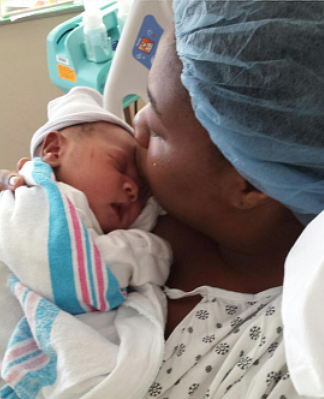What New York City hospitals deliver — an ongoing investigation
This post is part of larger 2016 National Fellowship project supported by the Center for Health Journalism at the USC Annenberg School of Communication.
Other stories in the series include:
Black mothers face higher complication rates when delivering babies in NYC

Charity and her son Kaleb.
When Charity Hines went to the hospital for what she thought was a late pregnancy checkup, the doctor surprised her — pulling the mucus plug to her cervix to induce labor without warning.
Charity screamed. She expected labor to be painful, but nothing like this. Through her haze, she noticed a medical resident observing her — and mirroring her in a strange way.
“He was a white guy, like you, but, man, did he turn pale,” Charity told me recently. “We’re talking ‘whiter-than-white,’ like, whiter than the wall he was standing against.”
Charity tried to deliver her baby for 27 hours, much of it with an infection and a fever, in excruciating pain. Eventually, she had a C-section, and her new son Kaleb had to go to the neonatal intensive care unit.
Their complications were relatively mild, but in central Brooklyn where Charity and Kaleb live, severe complications occur more frequent by far than any place else in the city, according to NYC Health Department statistics. Those complications can have long-term effects on mothers and babies and run up costs that all of us bear indirectly.
As the health reporter at WNYC, I’ve been talking to a lot of women like Charity in the last couple months — ever since an obstetrician I know handed me a recent study on 40 unnamed New York City hospitals. It’s a dense statistics-filled paper, but its takeaway is stark: serious childbirth complications occur three times more often at hospitals where a majority of the delivering moms are black than at hospitals where most of the delivering moms are white. And that’s after you take into account the two communities’ different health conditions and disparate access to prenatal care.
…serious childbirth complications occur three times more often at hospitals where a majority of the delivering moms are black than at hospitals where most of the delivering moms are white.
We want to put a face to these statistics and hear from women about their delivery experiences — and about what they wished they’d known before going to the hospital.
This is an ongoing investigation, and we need your help. If you’ve delivered in a hospital in the New York metro area, please take a moment to tell us how it went.
[This story was originally published by Medium.]

